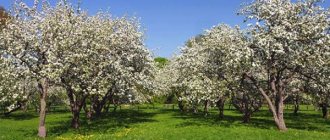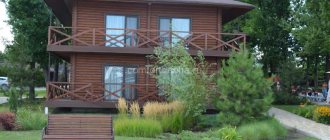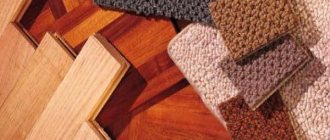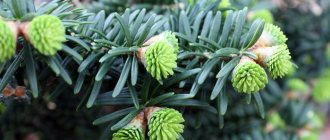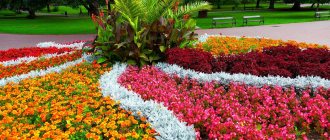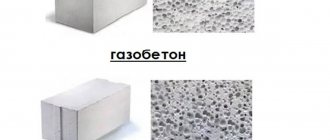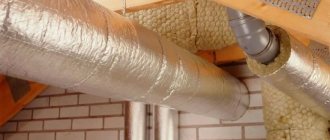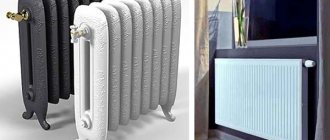Heavily shaded areas can be found in almost any landscape - be it the area on the north side of the house or, for example, under a massive oak tree in the far corner of the garden. It is also common to find forested areas where large oaks, birches, pine trees or other tall trees grow. But even in such situations, there is no need to allow the forest to dominate the garden, because smaller trees with beautiful flowers and showy foliage can still be planted underneath them. For this you will need breeds that can grow normally in the shade. Some species in conditions of strong shading may not reach the optimal height and may not show abundant flowering or fruiting, but at least they will not wither away or die there.
8 Trees That Can Grow in Full Shade
“Shadow” is a relative concept
First, let's look at what light levels exist from the point of view of plant agricultural technology. The terms used to describe the sunlight requirements of a particular crop quickly become familiar to anyone who works with plants, as they are usually listed on the label that comes with the seedling.
They include:
Full sun . For a site to be considered full sun, the plant placed there must receive six to eight hours of direct sunlight per day, with maximum light occurring between 10 a.m. and 4 p.m.
Full sun to partial shade . This suggests that the plant can tolerate a wider range of conditions. And it can grow both in full sun and in partial shade (see next point).
Partial shade/partial sun/partial shade . These terms are used interchangeably to refer to the need for four to six hours of sun exposure daily. It is preferable for the lighting to be most intense during the cooler morning hours.
Spotted shadow . Dappled sunlight is similar to partial shade, and is created when sunlight filters through the branches and foliage of deciduous trees.
Full shade . This term does not mean that there is no sun at all in such places, because very few plants can tolerate a truly complete absence of sunlight. Plants that can grow in full shade are those that can survive four hours of full sunlight (mostly in the morning or late afternoon). Full shade is also called conditions when the plant remains in patches of sunlight during the day, that is, diffused sunlight.
Important! Thus, when choosing a plant for shady conditions, it should be understood that the term “full shade” does not mean the absolute absence of light (in such conditions, only mushrooms can grow). This only indicates the need for minimal lighting, which the plant will be content with to maintain its vital functions.
Not all trees suitable for shady areas have the same light level requirements. And each tree species has its own range of shade tolerance. Also, remember that not all trees that tolerate shade can truly be called shade-tolerant trees. Many breeds simply have the ability to survive in the shade, but may lose some of their decorative features.
For example, individual trees that bloom profusely in the sun may produce much fewer flowers in the shade. And deciduous trees, which when grown in the sun show very bright decorative autumn colors, in the shade in autumn can produce faded, inconspicuous shades of foliage.
Design options for shady areas
Flower beds
Given the diversity of plants in size, height, flowering period and decorative value, designing flower beds becomes an enjoyable, creative activity with many different options. You can create a combined composition where the plants will bloom one after another or make a flower garden in which the main ones will not be flowering varieties, but with beautiful and colorful foliage. Imagine!
You can decorate and edge flower beds with small mounds of small pebbles, colored wood chips, mulch or decorative low fences, and sow lawn grass around them and pave paths.
Rock garden
Why not? Stones can be placed among flower beds, used as edging, or large specimens can be installed in different parts of the garden, decorated with smaller stones, and to prevent them from looking boring, unobtrusive grass perennials or ferns can be planted nearby.
Relaxation area and decorative elements
It is not at all necessary to arrange a leisure space with complex structures in a shady garden; a small table with a bench, a hammock or a simple small bench near a flowerbed will be enough. Garden figures and paths of various types, flowers in pots, etc. will be useful. The main thing is that the territory allows it.
Design of tree trunk circles
You can decorate the tree trunk area under three conditions: the tree must be mature and without surface roots; plants should not be planted too close to the tree trunk. For large trees with a lush crown and low-lying branches, it is necessary to select drought-resistant plants or plant early flowering species.
Well, some shade-tolerant vegetables and herbs can be added to the garden. For example, we often plant tomatoes to protect apple and pear trees from the codling moth. There are quite a few plants that can protect fruit trees from pests, for example, nasturtium will protect apple and cherry trees from apple worm and blood aphids, and daisies and marigolds will protect from aphids and nematodes. Lilies of the valley are a preventive measure against coccomycosis in stone fruit crops.
We study such properties of plants in practice and describe them on the pages of our website “ECOgarden for everyone”, because it’s so cool to use natural phytoncides to protect plants without resorting to chemicals.
There are many variations in the design of tree-trunk flower beds; they can be ordinary or multi-level; asymmetry and flower beds in the shape of a semicircle are welcome, especially if the trees grow along the wall.
A desolate area located in the shade can be turned into a fabulous, incredibly beautiful place. Use these tips and you will not have any questions about what to plant in the shade on your site.
Sugar maple
Sugar maple (Acer saccharum) is best known for its fall color, as its foliage turns bright scarlet in the fall. This type of maple is also considered the best tree for extracting sap used to make maple syrup. This is a beautiful tree for landscaping, and in summer it has carved, bright green, palmately dissected leaves. Other names for the species are rock maple and hard maple . It is used in urban landscaping, as well as in large gardens, as it grows quite tall.
- USDA hardiness zones : 3 to 8.
- Light requirement : full sun to full shade.
- Height : up to 40 meters
- Soil requirements : uncompacted, fertile, well-drained, slightly acidic soil.
Sugar maple (Acer saccharum). © FD Richards
Pine
Pine trees include plants that primarily grow in Asia and Europe.
As a rule, these are very tall trees with a spreading, wide crown. All species of these trees have needles collected in small bunches, however, the number of needles and their structure can vary significantly between different varieties. The needles usually last for several years and then fall off.
Growing and caring for coniferous plants in the garden, which are classified as pine, is not particularly difficult. The most important thing is to plant and care for it correctly the first year. These trees can withstand severe frosts and heat, however, they are light-loving.
Single color fir
Eastern hemlock
Eastern hemlock (Tsuga canadensis) is one of the few evergreen trees that can tolerate shade. This is a decorative moisture-loving species that can tolerate lower light levels during the day. Eastern hemlock may have several trunks and gray shoots. The needles are arranged in two rows, they are dark green, the reverse side has silvery lines. From a distance, hemlock branches look like spruce branches, but their needles are not sharp at all. The cones are small, no more than 2 - 3 cm.
Species plants are full-fledged trees, while numerous varieties grow in the form of low shrubs of varying habit, including creeping forms. Hemlock grows slowly. In nature, some specimens live up to 1000 years.
- USDA hardiness zones : 4 to 8.
- Light requirement : full sun to full shade.
- Height : by 10-15 years the tree reaches 10 meters in height.
- Soil requirements : rocky to medium soil fertility.
Eastern hemlock (Tsuga canadensis). © FD Richards
Ate
Let's move on now to the spruce trees. They have half as many species as pine trees - “only” about 50. And even less are sold here! These are common spruce (Picea abies), prickly spruce (P. pungens), Serbian spruce (P. omorica) and Canadian or gray spruce (P. glauca), or rather, their numerous varieties. For the most part, they prefer not to fry in the sun. Moreover, at a young age they can even get burned if you plant them in an open place - just like kids on the beach. This is especially true for Canadian spruce: shade is not just desirable for its varieties - it is necessary. The exception is the prickly spruce: it requires more light. But you are unlikely to confuse it with the others - this is the familiar “blue tree”. Otherwise, the needs of the prickly beauties are similar: they all love moisture. And, first of all, this concerns not the soil, as you probably thought, but air humidity. Spruce trees do not tolerate Wind Blow very well, and they are unlikely to like it in an open field.
Prickly spruce. Photo: www.globallookpress.com
Holly yew, or Japanese
The Japanese yew (Taxus cuspidata) is another shade-tolerant evergreen tree. In fact, it is one of the best evergreens for full shade. The plant is native to China, Japan, Korea and the Russian Far East. This conifer tolerates very dry and shady conditions. It usually grows as a spreading tree or tall shrub. The needles are dark green, flat, non-thorny.
There are many varieties and hybrids of yew. Female specimens develop unusual bumps that look like bright red berries. Caution should be exercised as the plant is poisonous.
- USDA Hardiness Zones: 4-7.
- Light requirement : full sun to full shade.
- Height : up to 10 meters.
- Soil requirements : sandy, loamy, well-drained.
Norway yew, or Japanese yew (Taxus cuspidata). © Texas Tech University Departments
General information
Coniferous plants in garden design can look great both in single and group compositions. In addition, needles are often used to create evergreen sculptures and hedges.
We suggest you read: How to propagate azaleas at home?
Among the advantages of such plantings are:
- Looks perfect at any time of the year;
- Do not shed leaves that need to be removed;
- They do not cause much trouble to care for.
However, before you decide to plant a particular coniferous plant, you need to familiarize yourself with its characteristics and find out what height it can reach. This will allow you to avoid some problems in the future associated with the growth of a tree or shrub for a summer cottage. Thus, the design of a garden with coniferous plants will look harmonious even after many years.
Coniferous crops on a summer cottage
Derain alternifolia
Derain alternifolia, or pagoda (Cornus alternifolia) is a deciduous spreading tree or large shrub with multi-tiered branches, wide-conical in shape. The plant looks very elegant due to its pronounced tiering, and the lower tier of its shoots hangs down to the ground. In spring, the tree bears clusters of tiny, star-shaped, creamy-white flowers, followed by small, round, blue-black fruits. Flowering is more abundant when there is a lot of sun, but derain is still one of the possibilities for decorating heavily shaded places. There are also varietal forms with variegated leaves.
- USDA Hardiness Zones : 4 through 8.
- Light requirement : full sun to full shade.
- Height : up to 5 meters, sometimes higher.
- Soil requirements : moist, acidic or neutral, well-drained soil.
Derain alternifolia, or pagoda (Cornus alternifolia. © Judy
Cherry laurel, keria and cotoneaster
Medicinal cherry laurel is also an evergreen shade-loving shrub with dense, glossy foliage. At the beginning of summer, racemes of fragrant white flowers bloom on it.
This is a rather rare plant in the gardens of the middle zone, as it does not tolerate low temperatures. For safe wintering it needs shelter.
Japanese Keria is characterized by a long spring-summer flowering period, which, in some cases, may repeat in the fall. It should be taken into account that in well-lit areas, keria blooms more abundantly. But it also tolerates the lack of sunlight quite well. Keria flowers are large, yellow, and collected in inflorescences.
The form of Japanese kerria Pleniflora, named after William Kerr, who developed this variety, has yellow flowers with large double petals. Keria is a heat-loving plant and therefore needs shelter and protection from the wind in winter.
Cotoneasters belong to the Rosaceae family. These are deciduous or evergreen perennial shade-tolerant shrubs. These plants come in a wide variety of shapes and sizes. They can grow as trees up to six meters high, or as low-growing creeping bushes.
The glossy foliage, dark green in summer and turning red in autumn, may persist through winter or fall off. Despite such serious differences, all cotoneasters have similar features, for which they are loved by gardeners. In all plants belonging to this genus, the leaves acquire a very picturesque color in the fall, and beautiful fruits ripen on the branches. The flowering period for cotoneasters is May-June. At this time, pink buds bloom into white flowers.
Black alder
Black alder (Alnus glutinosa) is a fast-growing, moisture-loving deciduous tree that easily adapts to a variety of growing conditions, native to Europe. The trees have a pyramidal shape. They can tolerate severely waterlogged soils, but will also tolerate somewhat dry conditions.
Alder has beautiful glossy leaves and quite decorative cones and earrings. The smooth gray bark of these plants is especially attractive in winter, when it stands out against the snow. Black alder is able to absorb nitrogen from the air and increase soil fertility through root nodules. Alder trees are also valuable in landscape restoration projects where the soil is severely depleted. Black alder has decorative forms of low growth.
- USDA Hardiness Zones : 4 through 8.
- Light requirement : full sun to full shade.
- Height : up to 5 meters, sometimes higher.
- Soil requirements : well-moistened soil.
Black alder (Alnus glutinosa). © pracbrown
Landing Features
Despite the fact that some types of conifers require special planting conditions, there are general rules for all their types. In particular, the important point is the planting time; for coniferous plants this is the end of April - beginning of May.
As mentioned above, the easiest way to grow crops is from seedlings. The only thing you need to pay attention to is their quality, which is indicated by the following points:
| Earthen lump | Must be whole and packed in burlap. The size of the coma should be one third of the length of the seedling. |
| Needle color | If the seedling is healthy, then the color of the needles is rich and the needles are elastic. |
Brief instructions for planting needles are as follows:
- First of all, you need to dig a hole with a volume slightly larger than the earthen ball of the seedling.
- Then you need to fill the hole with a mound 2/3 of its depth.
- After this, you should place the seedling on the mound and carefully distribute the roots around it.
- Next, you need to bury the roots. In this case, the seedling must be periodically shaken and the ground lightly trampled.
- After planting, the plant must be watered.
- Then you need to sprinkle dry soil around the seedling.
- At the end of the work, the soil should be mulched and sprinkled with peat around the plant.
Here, perhaps, are all the main points of planting coniferous crops.
Sumac (vinegar tree)
Smooth sumac (Rhus glabra) and staghorn sumac (R. typhina) are the most common and accessible landscape species of this plant. Both of them grow up to 3 - 5 meters in height and grow as a large shrub or small tree. Sumacs are also well known for their striking bright red foliage color in the fall.
The species can be distinguished by the fact that the branches of the staghorn sumac have a fluffy surface. Most gardeners grow sumac for its colorful fall display. Sumac has beautiful feathery leaves up to 50 cm long, which turn bright red in the fall (there are also yellow and orange varieties of sumac). An additional decoration is panicles of red fruits. The plants are drought tolerant but grow taller with regular watering in the absence of rain.
- USDA frost hardiness zones : 4 to 8.
- Light requirement : full sun to full shade.
- Height : 3-5 meters.
- Soil Requirements: Grows in almost any well-drained soil.
Smooth sumac (Rhus glabra). ©David Charlton
What companion plants can be planted in shaded corners of the garden?
To create beautiful corners in the shaded part of the garden, planting only shrubs is not enough.
You will need to select small plants that will allow you to maintain the decorative appearance of the site throughout the summer season.
Let's highlight the most popular ones and give them a brief description.
Climbing plants in natural conditions are undergrowth plants, so there is no doubt about their shade tolerance. Liana-like ones are used to decorate gazebos, pergolas, and verandas.
Popular plants of this group: girlish grapes, kirkazon and princely. They grow quickly and are capable of forming dense thickets. The attention of owners of suburban areas is often attracted by girlish grapes, the leaves of which acquire bright red-orange shades in the fall.
Ferns, depending on the varieties, differ in size, but their leaves have clear graphics and volume, which allows you to create a background for flowering shrubs.
Hostas are no less interesting in compositions with shrubs.
They can withstand shaded areas. It is noteworthy that the plant is represented by numerous varieties; gardeners can choose bushes from 10 to 60 cm in height.
The varieties also differ in the shape, size and color of the leaves, and the color of the edging. Hostas go well with ferns.
Ground cover plants are planted to create a carpet under the trees. Saxifraga, periwinkle, and lungwort are decorative and grow well in the shade.
Flowering annual crops tolerate shade:
- matthiola and fragrant tobacco;
- geraniums and forget-me-nots:
- rudbeckia.
Bulb crops can also be planted in the shade of trees, because crocuses, daffodils and tulips begin to bloom even before the trees become leafy.
Although most grains prefer sun. in partial shade will take root:
- spreading pine forest and hedgehog species;
- meadow foxtail and turf pike.
Considering which shrubs grow in the shade, we remembered the most popular plants that require minimal care. But in order to get not only decorative greenery, but active flowering and fruiting, of course, you will need to organize proper plant care.
Thuja occidentalis
Thuja occidentalis is an evergreen plant that adds elegance to your garden all year round. It is distinguished by flat, spreading, horizontal “paws” and fragrant dark green needles. The crown of the thuja is conical and consists of short spreading branches. Tall varieties have a dense columnar habit. However, it should be borne in mind that with strong shading, the thuja will have a looser crown, but this deficiency can be partially corrected by cutting.
Thuja occidentalis is most often used as an accent plant, but is also popular for creating hedges. There are numerous varieties of thuja with decorative needles (most often golden), however, this quality of the variety will only be manifested in full sun. In this regard, for partial shade it is more advisable to choose varieties with green needles.
- USDA Hardiness Zones : 3 through 7.
- Light requirements : full sun, partial sun, full shade.
- Height : 2-6 meters.
- Soil requirements : moist, well-drained alkaline soils.
Western thuja (Thuja occidentalis). © The New York Botanical
Caring for shade-loving plants
The following procedures are expected:
- Choosing a place where the crown will not be exposed to direct sunlight.
- In summer and spring it is important to additionally shade the plants.
- Observe the watering regime, because without direct sunlight, the moisture from the pot evaporates more slowly. It is important not to flood the flower.
- Select the soil carefully: it should provide the plant with all the necessary nutrients and microelements.
- Fertilize in a timely manner.
Korean fir
Korean fir (Abies Koreana) is a compact evergreen coniferous tree with a conical or pyramidal crown shape and well-defined tiered branches. The branches are densely covered with short but wide non-thorny needles. The needles are shiny, dark green on top, and silvery underneath. Korean fir begins to bear fruit early. The cones are very beautiful purple in color (up to 7 cm long). Unlike spruce trees, cones on fir branches do not hang, but grow vertically.
There are many varieties of Korean fir, including dwarf ones, as well as plants with yellow or silver needles (“turned inside out”).
- USDA Hardiness Zones : 4 through 8.
- Light requirements : full sun, partial sun, full shade.
- Height : up to 15 meters.
- Soil Requirements : Grows best in rich, consistently moist, slightly acidic, well-drained soil.
Korean fir (Abies Koreana)
Blooming shade-tolerant houseplants
This is the smallest group of shade-tolerant plants, since flowering still requires not deep twilight, but a light zone of partial shade.
Begonia
More than 1000 varieties of begonia are known. For indoor cultivation, root and tuberous varieties are used. The most famous begonia varieties, distinguished by large inflorescences, were bred by Belgian breeders.
This flower is distinguished by its tolerance to environmental conditions, easily tolerates shade and does not require specific care.
Saintpaulia
Known as Usambara violet. A compact plant with a life cycle of 3–4 years is capable of blooming almost continuously. Minus: quickly loses its decorative qualities.
Fir
Fir trees are fast-growing coniferous crops with a pyramidal crown. It is advisable to plant them in sheltered and shaded areas. On clay soils, they must be drained in the form of gravel or crushed stone.
It must be said that fir varieties of coniferous plants for the garden are very demanding in terms of soil saturation with water and its fertility. As for care, the plants require only sanitary spring pruning. In addition, young crops need to loosen the soil.
In the first year after planting, it is better to cover the plant with spruce branches for the winter. No further action is required, since the crop is frost-resistant.
Cedar on a summer cottage
Varieties
Gardeners give the greatest preference to varieties that are resistant to harsh climatic conditions, unpretentious in care and grow quickly.
It should be remembered that conifers are shade-loving plants, so young growth and low varieties require protection from the sun and wind. For a site located in a forest, gorge, or mountains, it is better to select shade-tolerant varieties.
Shade-loving varieties prefer partial shade, diffused light under the canopy of tall trees.
Shade-tolerant varieties of various types of coniferous plants are the most popular among gardeners:
- spruce – common, Canadian, prickly, Entelmani, Serbian, Echinoformis;
- fir – Siberian, Canadian, Korean, balsam, monochrome;
- Thuja Brabant (see photo);
- yew – Canadian, Repandence;
- Japanese thuevik (drooping);
- microbiota is cross-paired.
Names of tall coniferous trees for growing in the garden:
- pine – Weymouth (see photo), bristlecone, Japanese (Umbrella), Japanese white, eastern white, mountain, European cedar;
- fir – Korean, balsam, Fraser, monochrome;
- Metasequoia;
- spruce – Hoopsii, Aureospicata, blue;
- blunt-leaved cypress;
- Canadian hemlock.
Dwarf and decorative varieties:
- spruce – common (Typner, Little Gem, Nidiformis), gray (Echiniformis, Conica, Laurin), eastern (Thom Thumb Gold), Serbian Nana, prickly Mseno, Alberta, Echinoformis;
- pine – mountain (Mini Mops, Gnom, Picobello);
- juniper - Chinese, Blue Star, King of Spring;
- thuja – western (Malonyana Holub, Danica, Globosa Nana);
- Menzies pseudotuga.
